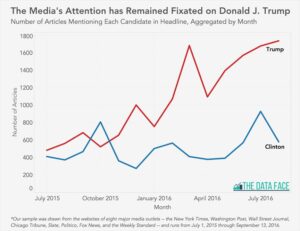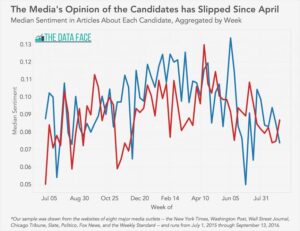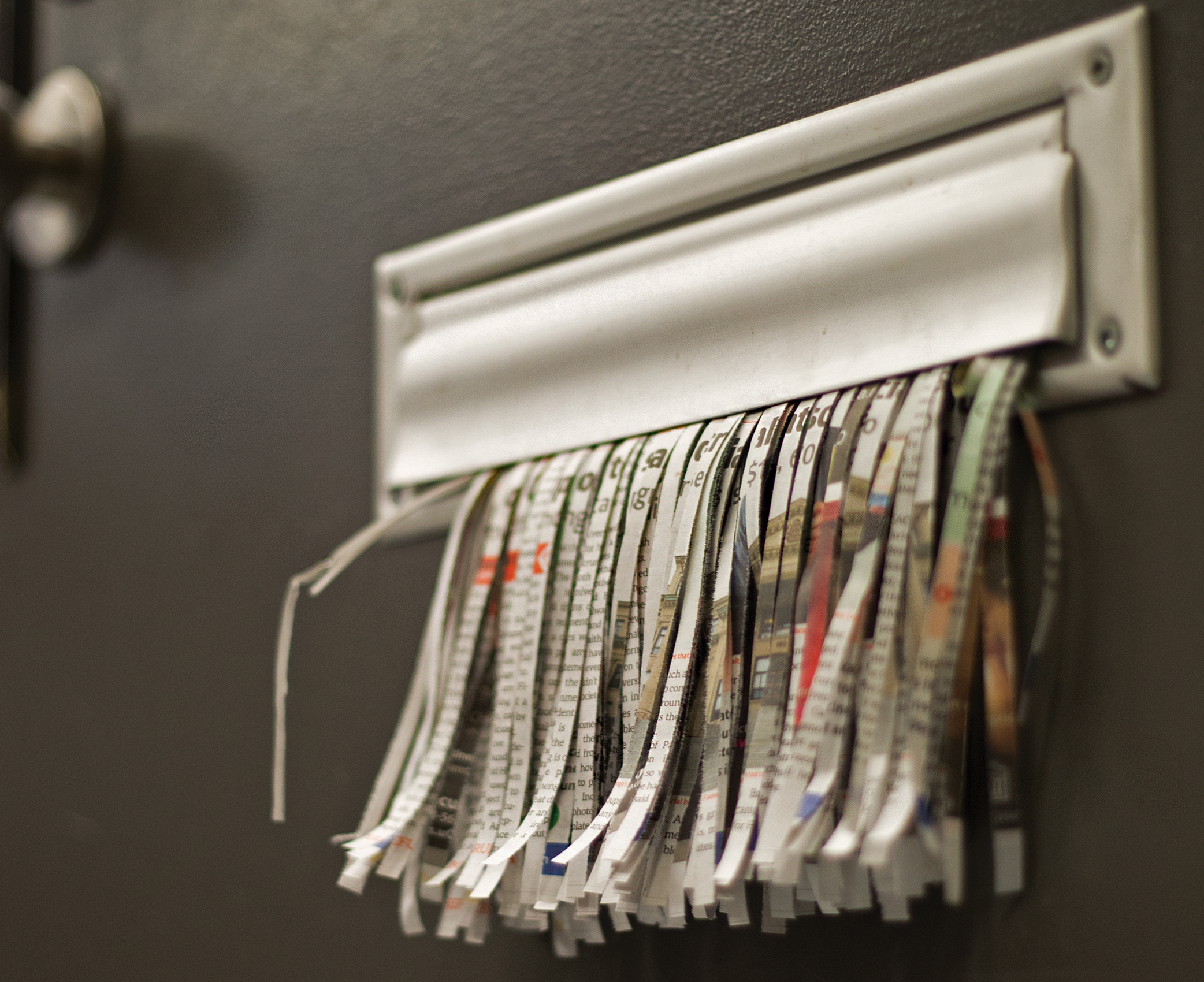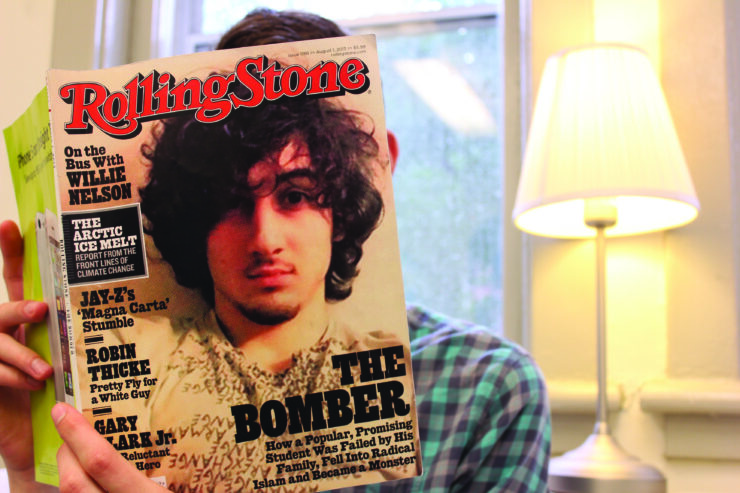To the shock and dismay of many, it was announced last week that Donald Trump would become the next president of the United States. Many pointed fingers at voters who cast their ballot for a third-party candidate, while others took to social media to condemn eligible voters who chose not to participate at all.
But in doing that, people fail to recognize that there’s a larger culprit—one who could’ve stopped the Trump catastrophe in its tracks much earlier than any single U.S. citizen could.
When executed correctly, the media is a powerful weapon that can ensure accountability, demand change, and alert the public to causes for concern. Unfortunately, the U.S. media failed on all of these accounts when they turned a blind eye to the damage of condoning the antics of a man not fit to handle his own Twitter account, let alone the White House.
When Jack Beckwith and Nick Sorscher from the Data Face performed data collection of a total of 21,981 articles written about the election, they found that Trump’s name was mentioned in 14,924 article headlines from July 1, 2015, to Aug. 31, 2016. However, then-presidential candidate Hillary Clinton was mentioned in less than half that amount.

Graph: Courtesy of the Washington Post.
Okay, so if Trump was mentioned in such a larger quantity, it must have been because news outlets were condemning his behaviour, right? Not exactly. According to the same study, the tone of the coverage didn’t really swing heavily in one direction or the other, but was very event-dependent.
For example, Beckwith and Sorscher say that the tone of Clinton’s coverage suffered during the email scandal, whereas Trump’s turned negative after he mocked a reporter with a disability. In other words, the study suggests that no candidate was receiving significantly more coverage with a negative tone than other candidates.

Graph: Courtesy of the Washington Post.
And this is extremely problematic for a number of reasons. Clinton, like any politician, has her downsides—putting classified information in a position to be compromised is a huge one. But make no mistake, with Trump threatening to ban Muslims from the country, build a wall between the U.S. and Mexico to weed out “Mexican rapists”, and repeal Roe v. Wade to restrict access to abortion, it becomes clear that the scales should be tipping much more dramatically.
But to see how Trump rode media validation to the highest office in the free world, it’s necessary to look at the roots of his time in the spotlight—The Apprentice.
This reality TV show is one that Trump has said made Americans realize that he was “highly educated.” Although it may be true that he attended university for business, all one has to do is look at the loss of almost $1 billion he suffered in 1995 and the financial losses in the 1970s that could have forced him into personal bankruptcy—if not for his father’s contributions—to realize that he’s largely unqualified to be judging the business acumen of others.
Yet, he was given his own show to do exactly that back in 2004. And thus began a vicious cycle of the media providing Trump with unwarranted validation. Trump’s main campaign claim that his success in business qualifies him for the oval office should never have been treated as legitimate by the media, given the aforementioned financial failures.
Flash forward to the 2016 presidential race, and the relationship between Trump and the media is still as dysfunctional as ever.
In March 2016, the New York Times’ Jim Rutenberg noted a “disturbing symbiosis between Mr. Trump and the news media.” This simply refers to the fact that Trump’s racist tirades, threats, and sensationalist claims get clicks. And while that should always be the goal of any news-based website, the current decline of the U.S. media industry has created a stronger sense of desperation to get these page views—introducing motives for media that lie beyond informing the public.
In that same month, Trump told Time magazine, “It’s ratings. I go on one of these shows and the ratings double. They triple. And that gives you power. It’s not the polls. It’s the ratings.” And as much as you may hate to admit it, he’s right.
The New York Times reported in March 2016 that Trump had received nearly $1.9 billion worth of news coverage, while Ted Cruz—his closest competition—gained little more than $300 million. To look at how those numbers compare on the Democratic side, Hillary Clinton received less than $750 million at the time. It’s important to make the distinction that this astronomical number is not media time he paid for, but free media time.
You may argue that by providing Trump a public platform, media can allow people to become more informed on the ills of his campaign. However, this ignores the fact this very action has allowed hate and ignorance to become the norm. This mindset denies the reality that Trump has been prone to tell lies and ignore the facts—and with inundation of lies under a guise of “facts,” from a “highly educated” presidential candidate, many likely began to trust his false claims.
For context, Politifact ranked all of Trump’s comments from “true” to “pants on fire.” He garnered 14 “true,” 111 “false,” and 57 “pants on fire,” compared to 72, 29, and 7 for Clinton, respectively.
This is exactly why the mainstream media has failed the U.S. By providing Trump with so much airtime and print space, they condoned the transition of hate speech from a crime to a state of normalcy—all in the name of boosting their bank accounts.
But it’s not just the mainstream media that’s to blame. Facebook has recently come under fire as some have accused its news algorithm of creating an echo chamber for users, where discourse between political views is effectively shut down.
The Pew Research Centre recently reported that “the majority of Americans get their news from social media, with 44 per cent via Facebook.”
This alone may not seem so sinister. But with the rise of clickbait journalism, and the simultaneous boom in social media branching out into a news dissemination role, fake news has seen an ideal ground for proliferation—and this dynamic did not fail to make an appearance in this election.
A report from BuzzFeed found that 38 per cent of posts shared from three large conservative politics pages on Facebook included “false or misleading information,” and that three large left-leaning pages did the same 19 per cent of the time.
This is worrisome, since Facebook’s algorithm can effectively allow fake news to circulate within these echo chambers, where its participants have no incentive to criticize or disprove the false information.
Media is an indispensable part of society—but it can only be effective when it has the best interests of their nation in mind. Unfortunately, the news media indulged a little too much in the revenue boost that Donald Trump brought them, and social media decided to try competing in the news industry without establishing editorial guidelines. Both took steps away from objectivity in the name of boosting enter- prise success.
There’s a long way to go before the public can overcome the damage done by the media in the wake of a Trump presidency. Luckily, the media will have a loud, uneducated, hateful president to remind them every day for the next four years of why public interest must come first.





